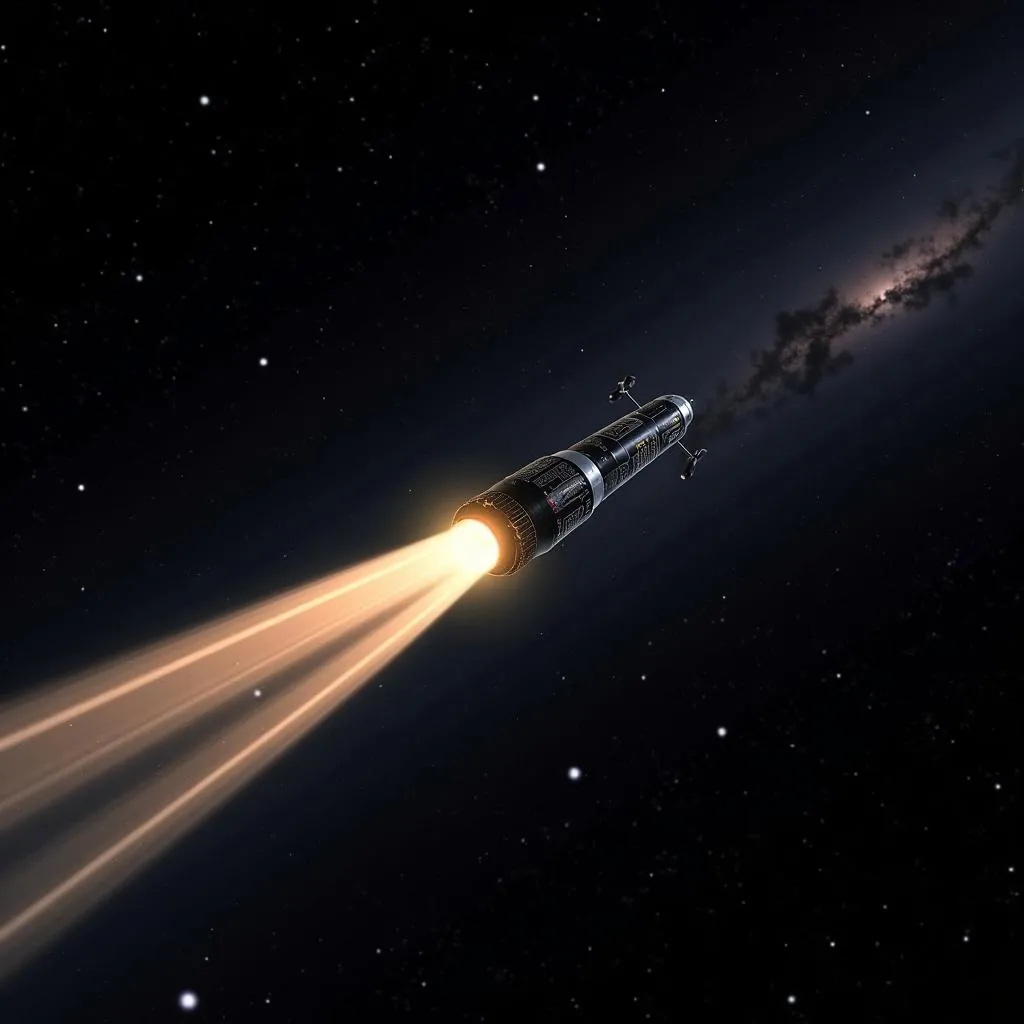Have you ever looked up at the night sky and wondered about the vastness of space? What lies beyond our planet? What mysteries are hidden in the cosmos? These questions have captivated humanity for centuries, and thanks to the Voyager spacecraft, we’re getting closer to finding some answers. But just how fast are these incredible feats of engineering traveling as they journey into the great unknown?
The Voyagers’ Need for Speed
Launched in 1977, the Voyager 1 and 2 spacecraft were designed to explore the outer planets of our solar system. To reach their destinations and beyond, they needed some serious speed. Currently, Voyager 1 is traveling at approximately 38,000 miles per hour (61,000 kilometers per hour), while Voyager 2 is cruising at a slightly slower pace of 35,000 miles per hour (56,000 kilometers per hour). To put that into perspective, they could circumnavigate the Earth at the equator in just under 40 minutes!
 Voyager spacecraft traveling through space
Voyager spacecraft traveling through space
Harnessing Gravity for a Cosmic Boost
The Voyagers didn’t achieve these incredible speeds solely on the power of their engines. They took advantage of a clever technique called “gravity assist.” As a spacecraft approaches a planet, it’s pulled in by the planet’s gravity, increasing its speed. By carefully planning their trajectories, NASA engineers used the gravitational pull of Jupiter, Saturn, Uranus, and Neptune to slingshot the Voyagers further and faster into space.
Where Are the Voyagers Headed?
While their primary missions focused on the outer planets, the Voyagers are now on a much grander journey – venturing into interstellar space. Voyager 1 crossed this boundary in 2012, becoming the first human-made object to do so. Voyager 2 followed suit in 2018.
Their current trajectories will take them far beyond our solar system, carrying with them the Golden Records – messages from Earth containing sounds, images, and music that represent the diversity of life and culture on our planet. It’s a message in a bottle cast into the cosmic ocean, a testament to human curiosity and our desire to connect with whatever else might be out there.
What Does the Future Hold?
The Voyagers are expected to continue their journey for billions of years, silently drifting through the galaxy. They are our emissaries to the stars, carrying with them the legacy of human ingenuity and the hope of discovering something truly extraordinary.
Frequently Asked Questions
How long will the Voyagers keep transmitting data?
It is estimated that the Voyagers will have enough power to keep transmitting data back to Earth until around 2025.
What will happen to the Voyagers after they stop transmitting?
Even after they fall silent, the Voyagers will continue their journey through interstellar space, potentially for billions of years, becoming silent ambassadors of humanity.
Can we ever catch up to the Voyagers?
While it’s theoretically possible, catching up to the Voyagers would require extremely advanced technology and immense resources. It’s not something that’s feasible with our current capabilities.
